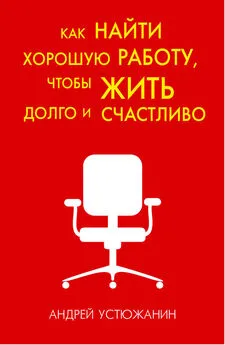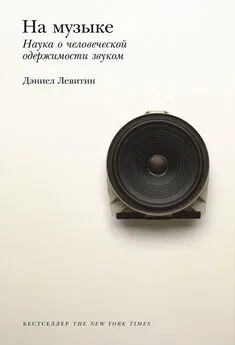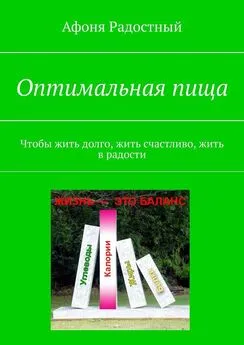Дэниел Левитин - Счастливое старение. Рекомендации нейробиолога о том, как жить долго и хорошо
- Название:Счастливое старение. Рекомендации нейробиолога о том, как жить долго и хорошо
- Автор:
- Жанр:
- Издательство:Манн, Иванов и Фербер
- Год:2021
- Город:Москва
- ISBN:9785001695868
- Рейтинг:
- Избранное:Добавить в избранное
-
Отзывы:
-
Ваша оценка:
Дэниел Левитин - Счастливое старение. Рекомендации нейробиолога о том, как жить долго и хорошо краткое содержание
Ответы на эти и многие другие вопросы вы найдете в книге известного нейробиолога и автора бестселлеров о природе возрастных изменений и о том, как можно прожить долго и что нужно делать сейчас (в любом возрасте), чтобы в 70, 80 и 90 жить полной жизнью.
Книга предназначена для широкого круга читателей.
На русском языке публикуется впервые.
Счастливое старение. Рекомендации нейробиолога о том, как жить долго и хорошо - читать онлайн бесплатно ознакомительный отрывок
Интервал:
Закладка:
Из личного общения с Биллом Деградо 11 сентября 2019 года.
836
H. Cox, “Aubrey de Grey: Scientist Who Says Humans Can Live for 1,000 Years,” Financial Times, February 18, 2017, https://www.ft.com/content/238cc916-e935-11e6-967b-c88452263daf.
837
A. D. N. J. de Grey, “Undoing Aging with Molecular and Cellular Damage Repair,” MIT Technology Review, 2017, https://www.technologyreview.com/s/609576/undoing-aging-with-molecular-and-cellular-damage-repair/.
838
См., например: Грей, ди О., Рэй М. Отменить старение. Прорывы в современной науке смогут обратить старение вспять уже при нашей жизни. ООО «Институт Биологии Старения», 2006.
839
H. Warner et al., “Science Fact and the SENS Agenda: What Can We Reasonably Expect from Ageing Research?” EMBO Reports 6, no. 11 (2005): 1006–1008.
840
A. Kowald and T. B. Kirkwood, “Evolution of the Mitochondrial Fusion-Fission Cycle and Its Role in Aging,” Proceedings of the National Academy of Sciences 108, no. 25 (2011): 10237–10242.
841
M. Kyriazis, “The Impracticality of Biomedical Rejuvenation Therapies: Translational and Pharmacological Barriers,” Rejuvenation Research 17, no. 4 (2014): 390–396.
842
Warner et al., “Science Fact and the SENS Agenda”.
843
N. Barzilai, “An Update on Anti-Aging Drug Trials,” Innovation in Aging 2, suppl. 1 (2018): 544.
844
D. E. Harrison et al., “Rapamycin Fed Late in Life Extends Lifespan in Genetically Heterogeneous Mice,” Nature 460, no. 7253 (2009): 392.
845
J. B. Mannick et al., “mTOR Inhibition Improves Immune Function in the Elderly,” Science Translational Medicine 6, no. 268 (2014): 268ra179.
846
G. Garg et al., “Antiaging Effect of Metformin on Brain in Naturally Aged and Accelerated Senescence Model of Rat,” Rejuvenation Research 20, no. 3 (2017): 173–182; M. G. Novelle et al., “Metformin: A Hopeful Promise in Aging Research,” Cold Spring Harbor Perspectives in Medicine 6, no. 3 (2016): a025932.
847
PR Newswire, “Anti-Aging Human Study on Metformin Wins FDA Approval,” December 16, 2015, https://www.prnewswire.com/news-releases/anti-aging-human-study-on-metformin-wins-fda-approval-300193724.html.
848
Y. Aman et al., “Therapeutic Potential of Boosting NAD+ in Aging and Age-Related Diseases,” Translational Medicine of Aging (2018); S. I. Imai and L. Guarente, “NAD+ and Sirtuins in Aging and Disease,” Trends in Cell Biology 24, no. 8 (2014): 464–471.
849
S. Loui, “Nicotinamide,” Huntington’s Outreach Project for Education at Stanford, June 29, 2010, https://hopes.stanford.edu/nicotinamide/#relationship-between-nicotinamide-and-nicotine.
850
J. Li et al., “A Conserved NAD+ Binding Pocket That Regulates Protein-Protein Interactions During Aging,” Science 355, no. 6331 (2017): 1312–1317.
851
S. Dutta and P. Sengupta, “Men and Mice: Relating Their Ages,” Life Sciences 152 (2016): 244–248.
852
R. W. Dellinger et al., “Repeat Dose NRPT (Nicotinamide Riboside and Pterostilbene) Increases NAD+ Levels in Humans Safely and Sustainably: A Randomized, Double-Blind, PlaceboControlled Study,” NPJ Aging and Mechanisms of Disease 3, no. 1 (2017): 17.
853
C. R. Martens et al., “Chronic Nicotinamide Riboside Supplementation Is Well-Tolerated and Elevates NAD+ in Healthy Middle-Aged and Older Adults,” Nature Communications 9, no. 1 (2018): 1286.
854
Цит. по: M. Bolotnikova, “Anti-Aging Approaches,” Harvard Magazine, September – October 2017, https://harvardmagazine.com/2017/09/anti-aging-breakthrough.
855
Цит. по: M. Taylor, “A ‘Fountain of Youth’ Pill? Sure, If You’re a Mouse,” Kaiser Health News, February 11, 2019, https://khn.org/news/a-fountain-of-youth-pill-sure-if-youre-a-mouse/.
856
Из личного общения с Дэвидом Синклером 19 марта 2019 года.
857
S. Nowoshilow et al., “The Axolotl Genome and the Evolution of Key Tissue Formation Regulators,” Nature 554, no. 7690 (2018): 50.
858
M. Lucanic et al., “Impact of Genetic Background and Experimental Reproducibility on Identifying Chemical Compounds with Robust Longevity Effects,” Nature Communications 8 (2017): 14256.
859
R. Klausner, In Favor of Science: The Importance and Impact of Scientific Research, Minerva Schools at KGI (San Francisco: Consequent, 2019).
860
P. B. Baltes and J. Smith, “New Frontiers in the Future of Aging: From Successful Aging of the Young Old to the Dilemmas of the Fourth Age,” Gerontology 49, no. 2 (2003): 123–135.
861
S. Sault, “If You Ask Richard Overton the Secret to Longevity, He’ll Tell You God and Cigars Are the Answer,” Texas Hill Country, June 15, 2017, https://texashillcountry.com/richard-overton-the-secret-to-longevity/; B. Meyer, “At 112, America’s Oldest Man Has the Secret to a Long Life: ‘Just Keep Living. Don’t Die,’ ” Dallas News, May 10, 2017, https://www.dallasnews.com/life/better-living/2018/05/10/americas-oldest-man-still-kicking-smoking-nears-112-secret-dont-die.
862
M. Melby-Lervåg and C. Hulme, “Is Working Memory Training Effective? A Meta-Analytic Review,” Developmental Psychology 49, no. 2 (2013): 270.
863
A. Bahar-Fuchs, L. Clare, and B. Woods, “Cognitive Training and Cognitive Rehabilitation for Mild to Moderate Alzheimer’s Disease and Vascular Dementia,” Cochrane Database of Systematic Reviews 6 (2013); Stanford Center on Longevity, “A Consensus on the Brain Training Industry from the Scientific Community,” October 20, 2014, http://longevity3.stanford.edu/blog/2014/10/15/the-consensus-on-the-brain-training-industry-from-the-scientific-community-2/.
864
Впоследствии сумма урегулирования была уменьшена до 2 миллионов долларов. Federal Trade Commission, “Lumosity to Pay $2 Million to Settle FTC Deceptive Advertising Charges for Its ‘Brain Training’ Program,” January 5, 2016, https://www.ftc.gov/news-events/press-releases/2016/01/lumosity-pay-2-million-settle-ftc-deceptive-advertising-charges.
865
E. L. Green, “BrainFunction Firm Backed by DeVos Misled in Ads,” The New York Times, June 27, 2018, p. B3.
866
D. J. Simons et al., “Do ‘BrainTraining’ Programs Work?” Psychological Science in the Public Interest 17, no. 3 (2016): 103–186.
867
Simons et al., “Do ‘Brain-Training’ Programs Work?”
868
Simons et al., “Do ‘Brain-Training’ Programs Work?”
869
A. Shimamura, Get SMART! Five Steps toward a Healthy Brain (Scotts Valley, CA: CreateSpace, 2017).
870
B. Carey, “A Memory Jolt Raises Hopes,” The New York Times, February 13, 2018, p. D1.
871
M. S. Gazzaniga, Human: The Science behind What Makes Your Brain Unique (New York: Harper Perennial, 2008). Я уже писал об этом в статье: D. J. Levitin, “Brain Candy,” The New York Times, August 22, 2008, p. BR9.
872
A. D. Mohamed, “Neuroethical Issues in Pharmacological Cognitive Enhancement,” Wiley Interdisciplinary Reviews: Cognitive Science 5, no. 5 (2014): 533–549; H. Maslen, N. Faulmüller, and J. Savulescu, “Pharmacological Cognitive Enhancement– How Neuroscientific Research Could Advance Ethical Debate,” Frontiers in Systems Neuroscience 8 (2014): 107.
873
Presidential Committee for the Study of Bioethical Issues, “Gray Matters: Topics at the Intersection of Neuroscience, Ethics, and Society,” March 2015, https://bioethicsarchive.georgetown.edu/pcsbi/sites/default/files/GrayMatter_V2_508.pdf.
874
A. L. Allen and N. K. Strand, “Cognitive Enhancement and Beyond: Recommendations from the Bioethics Commission,” Trends in Cognitive Sciences 19, no. 10 (2015): 549–551.
875
K. L. Cropsey et al., “Mixed-Amphetamine Salts Expectancies among College Students: Is Stimulant Induced Cognitive Enhancement a Placebo Effect?” Drug and Alcohol Dependence 178 (2017): 302–309.
876
M. J. Farah et al., “When We Enhance Cognition with Adderall, Do We Sacrifice Creativity? A Preliminary Study,” Psychopharmacology 202, nos. 1–3 (2009): 541–547.
877
P. Gerrard and R. Malcolm, “Mechanisms of Modafinil: A Review of Current Research,” Neuropsychiatric Disease and Treatment 3, no. 3 (2007): 349.
878
M. J. Farah, “The Unknowns of Cognitive Enhancement,” Science 350, no. 6259 (2015): 379–380.
879
R. M. Battleday and A.-K. Brem, “Modafinil for Cognitive Neuroenhancement in Healthy Non-Sleep-Deprived Subjects: A Systematic Review,” European Neuropsychopharmacology 25 (2015): 1865–1881.
880
A. D. Mohamed, “The Effects of Modafinil on Convergent and Divergent Thinking of Creativity: A Randomized Controlled Trial,” Journal of Creative Behavior 50, no. 4 (2014): 252–267.
881
A. D. Mohamed and C. R. Lewis, “Modafinil Increases the Latency of Response in the Hayling Sentence Completion Test in Healthy Volunteers: A Randomised Controlled Trial,” PLoS One 9, no. 11 (2014): e110639.
882
L. Bäckman et al., “The Correlative Triad among Aging, Dopamine, and Cognition: Current Status and Future Prospects,” Neuroscience and Biobehavioral Reviews 30, no. 6 (2006): 791–807.
883
T. E. Wilens et al., “Misuse and Diversion of Stimulants Prescribed for ADHD: A Systematic Review of the Literature,” Journal of the American Academy of Child and Adolescent Psychiatry 47, no. 1 (2008): 21–31.
884
I. Smith, “Psychostimulants and Artistic, Musical, and Literary Creativity,” in The Neuropsychiatric Complications of Stimulant Abuse, International Review of Neurobiology, vol. 120, ed. P. Taba, A. Lees, and K. Sikk, pp. 301–326 (Waltham, MA: Academic Press, 2015); S. J. Heishman, B. A. Kleykamp, and E. G. Singleton, “Meta-Analysis of the Acute Effects of Nicotine and Smoking on Human Performance,” Psychopharmacology 210, no. 4 (2010): 453–469.
885
B. Hahn et al., “Nicotine Enhances Visuospatial Attention by Deactivating Areas of the Resting Brain Default Network,” Journal of Neuroscience 27, no. 13 (2007): 3477–3489.
886
Интервал:
Закладка:








![Дэниел Левитин - Путеводитель по лжи [Критическое мышление в эпоху постправды]](/books/1101191/deniel-levitin-putevoditel-po-lzhi-kriticheskoe-my.webp)

